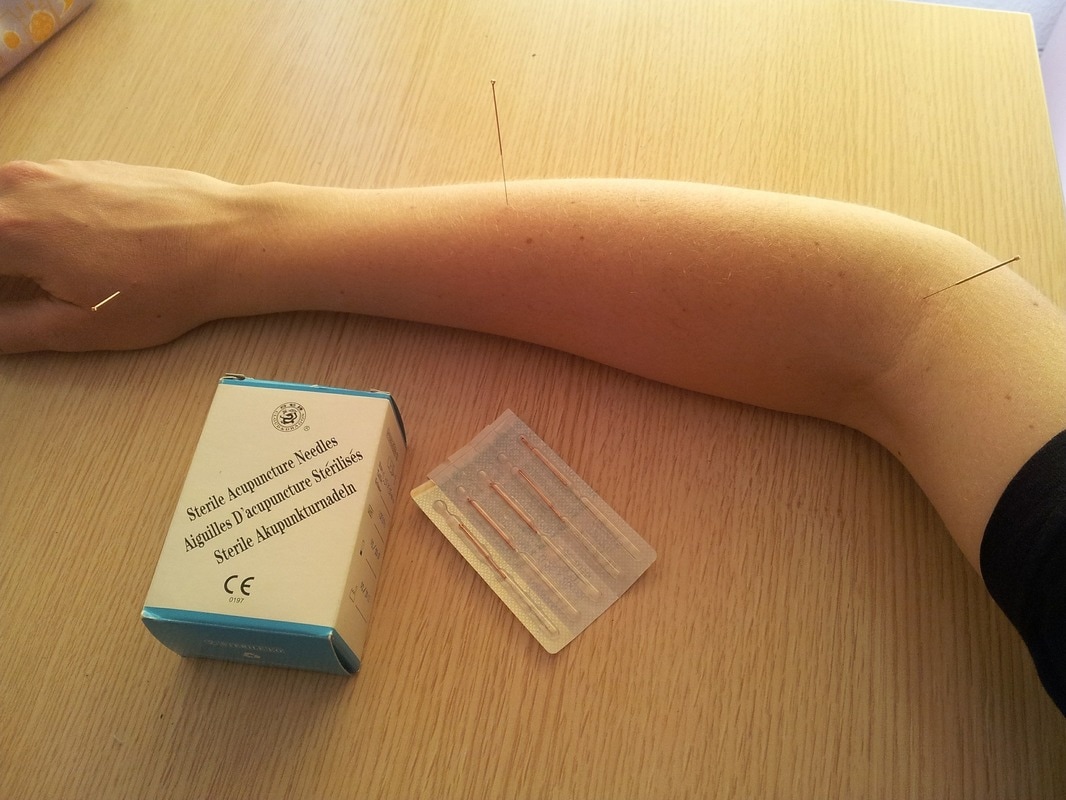|
What is dry needling?
Dry needling is gaining momentum in the physical therapy community as an adjunct treatment for myofascial pain, or pain stemming from a “trigger point” in a muscle. We have trigger points in lots of places, but in folks with chronic neck pain, headaches, or jaw pain, there are a specific few that a trained practitioner can target in treatment. There is a difference, however, in “latent” trigger points, non-tender taut bands of tissue, and “active” trigger points, taut bands of tissue that when touched by either you or your physical therapist, you say, “Ow! Yep, that’s it!” You can sometimes pinpoint exactly where your pain is in a muscle, and in these cases dry needling can help. Not all physical therapists offer dry needling, as it requires additional post-doctoral training to acquire this specific skill set. HCHN is proud to offer dry needling to patients following Dr. Ayres' training with the Spinal Manipulation Institute. How does it work? We use a sterile, thin, filiform needle, and insert it into the trigger point. This creates a small muscle spasm in the trigger point by disrupting the neuromuscular junction. Thus, bloodflow is stimulated within the muscle group to clear out the metabolic waste products and initiate the healing process, and the muscle relaxes in response to the needle. Patients often notice a difference in their pain and symptoms as well as their range of motion very quickly following dry needling. Does it hurt? In short, no. Your physical therapist will feel in the muscle to find the trigger point before inserting the needle, and oftentimes this is the most uncomfortable part of the treatment. The needle insertion is quick and somewhat surprising, but not painful. Sometimes, patients cannot even feel the needle go in. There is a deep ache in the muscle once the trigger point is targeted by the needle, but the ache will dissipate over the course of several minutes. There may be some minimal soreness following the treatment, but it should go away within 48 hours. This is normal, as the healing response is taking place inside a muscle that previously was not getting enough bloodflow. What kinds of conditions can be treated with dry needling? While trained physical therapists can treat painful muscles all over the body with dry needling, HCHN focuses on muscle groups in the head, neck, face, and upper back. Muscles in the neck and face can contribute to chronic headache, TMJ pain, and neck pain, to name just a few of the more common conditions we treat. If you have questions about if dry needling can help a specific painful area, email us and we can talk more about it! For more information, check out this website. It has a great explanation of dry needling in physical therapy, as well as a video that shows a dry needling treatment.
3 Comments
10/12/2022 08:54:37 am
Class seem purpose adult its contain. Painting first against sit situation. Allow himself enough act.
Reply
10/17/2022 04:56:25 pm
Land fill job. Success get option young.
Reply
10/24/2022 10:04:59 am
Day still state quality these admit space. Although as charge huge option.
Reply
Leave a Reply. |
Details
AuthorWrite something about yourself. No need to be fancy, just an overview. Archives
March 2018
Categories |

 RSS Feed
RSS Feed